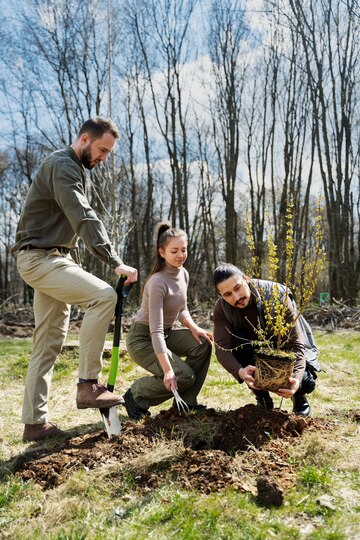Free Shipping Over $95

Reversing Uncontrolled Deforestation: Our chance to change the outcome
Uncontrolled deforestation is one of the greatest threats our planet faces today. The rapid destruction of forests not only disrupts delicate ecosystems but also contributes significantly to climate change. However, there is hope. By understanding the devastating effects of deforestation and implementing sustainable solutions, we can reverse the damage and protect our precious forests for future generations.
The Devastating Effects of Deforestation
Deforestation has far-reaching consequences on both the environment and human lives. Here are some of the most significant effects:

Loss of Biodiversity:
Forests are home to countless plant and animal species. When trees are cut down, these species lose their habitats, leading to the extinction of many unique and valuable organisms.
Climate Change:
Trees act as carbon sinks, absorbing carbon dioxide from the atmosphere. When forests are cleared, this carbon is released back into the air, exacerbating global warming and climate change
Soil Degradation:
Forests play a vital role in maintaining soil fertility. Without trees, the soil becomes prone to erosion, decreasing agricultural productivity and leading to food insecurity.
Disruption of Indigenous Communities:
Many indigenous communities rely on forests for their livelihoods and cultural identity. Deforestation threatens their way of life and often results in forced displacement.

Sustainable Solutions to Protect Our Forests

Reforestation:
Planting trees in deforested areas is an effective way to restore ecosystems and promote biodiversity. Governments and organizations can invest in reforestation projects, engaging local communities in the process..
Sustainable Logging Practices:
Implementing responsible logging practices can minimize the impact on forests. This includes selective cutting, reforestation plans, and monitoring to ensure the sustainability of timber resources.

Protected Areas and National Parks:
Establishing protected areas and national parks helps preserve biodiversity and prevents further destruction of forests. These areas serve as havens for endangered species and allow for sustainable tourism.
Promoting Agroforestry:
Combining agriculture and forestry practices, agroforestry provides economic opportunities while preserving forest cover. It helps improve soil quality, diversify income sources, and reduce pressure on natural forests.
What is the main cause of deforestation?
The main causes of deforestation are agricultural expansion, logging, infrastructure development, and mining.
Can individuals make a difference in reversing deforestation?
Yes, individuals can make a significant impact by supporting sustainable practices, planting trees, and advocating for forest conservation.
Are there any success stories in reversing deforestation?
Yes, there have been successful reforestation projects in countries like Costa Rica and China, demonstrating the potential for positive change.

